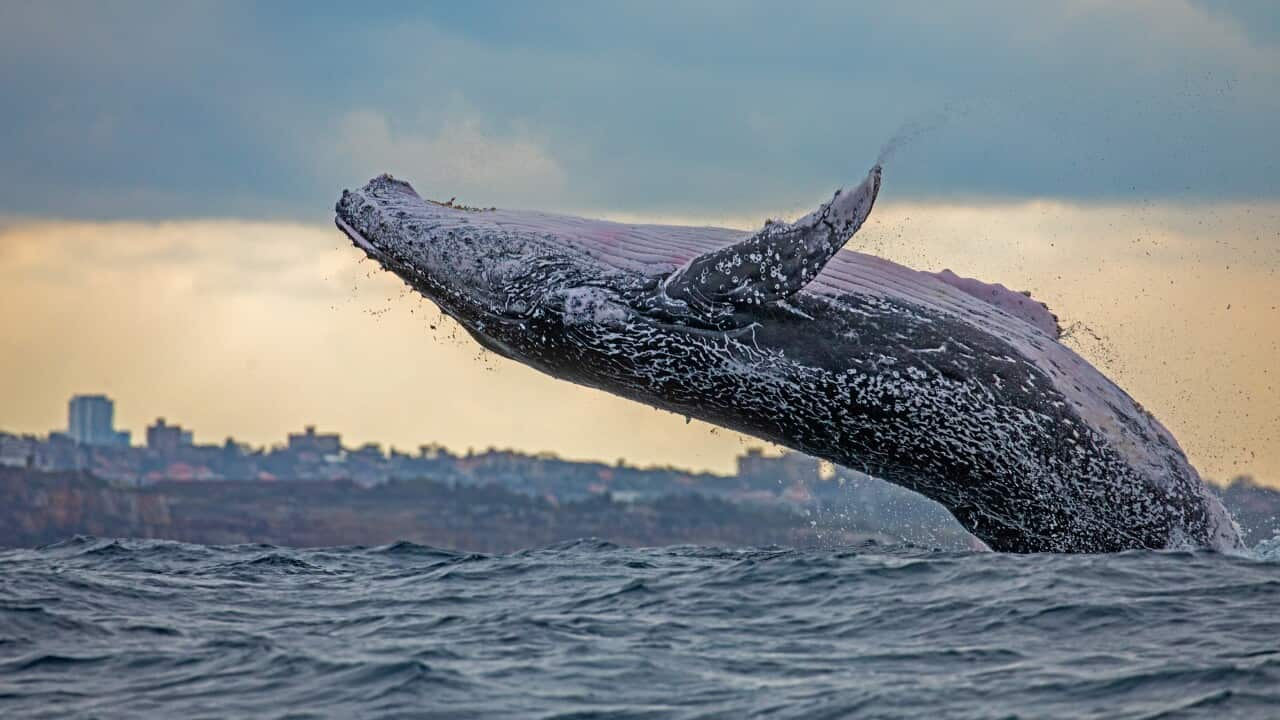Whale migration season is underway, and it not only presents spotting opportunities, but the chance for unexpected encounters too.
Such was the case for a kayaker who was joined by a humpback whale off Sydney's eastern beaches on Saturday.
The encounter was captured on drone footage and shared on social media by DroneSharkapp. Comments on the post suggested the whale had followed the kayaker from Coogee to Bondi beach.
The migration season starts in May and comes after a summer of feeding in Antarctica, Vanessa Pirotta, wildlife scientist at Macquarie University, wrote in an article for .
She said when the weather there gets too cold the whales head north for warmer Australian waters such as along the Great Barrier Reef, and those in the Kimberley region on the west coast.
There are several different species of whale people can typically spot depending on where they are on the coast, Dr Pirotta wrote. These include the humpback whale, southern right whale, dwarf minke whale, and pygmy blue whale.
The first three species tend to make the journey to breed and calve, she wrote, while the pygmy blue whale will usually hang around in the warmer waters for the summer before taking off along the west coast of Australia and into international waters, where it's thought they breed during the winter.

There are several different species of whale people can typically spot depending on where they are on the coast. Source: AAP, AP / Mark Baker
ORRCA, which hosts an annual census day where citizens can report whale sightings, said on Sunday more than 5,092 whales, predominantly humpbacks, had been spotted migrating up the NSW coast — a record figure.
Where to see whales in Australia
There are a number of place across the country that for whale watching.
These include Great Oyster Bay and Federick Henry Bay in Tasmania, Flinders Bay and Albany in Western Australia, The Gap and Jervis Bay in NSW, Encounter Bay and Ceduna in South Australia, Hervey Bay and Whitsunday Islands in Queensland, and Logans Beach and Lady Bay in Victoria.

Southern right whales swimming in Bridgewater Bay, near Portland, Victoria in September 2018. Source: AAP / Bob McPherson Photography
When watching from land, she recommended scanning the horizon from left to right slowly and if on a boat, "use landmarks or other boats as potential navigational markers".
"Keep an eye out for anything at the surface that moves or pops up suddenly," she wrote. "I’ve seen some amazing things while waiting for whales, such as jumping sharks and sunfish."
There are also , including no-approach zones when out on the water, to keep whales and humans safe.









